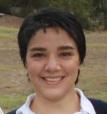

Showing 181 - 200 of 343 results

Blue Carbon Horizons Team wins Eureka Prize for Environmental Research
Blue Carbon Horizons Team showed coastal wetlands capture more carbon as sea levels rise
Australia’s best and brightest nuclear scientists recognised in 2018 ANSTO Awards
The ANSTO Awards in Nuclear Science and Technology 2018 were presented on Friday 2 November at The Australian Museum, and showcased ANSTO’s unique nuclear science and technology capabilities, which enable progress in the key areas of health research and innovation for industry.
Improving the production of piezoelectric materials for naval sonar systems
Thales Australia, a key supplier to the Australian Defence Forces, provided an industrial challenge to National Graduate Innovation Forum participants relating to the production of piezoelectric ceramic components used in naval sonar arrays and systems.
Hungarian Ambassador attends ceremony to mark installation of new imaging scanners
The Hungarian Ambassador to Australia and a small delegation visited ANSTO for a special ceremony to mark the installation and commissioning of two new nuclear medicine scanners from the Hungarian company Mediso Pacific.
Critical minerals projects funded under Australian Research Centre Projects Program
ANSTO is contributing to key critical minerals projects funded by the Federal Government.

United Uranium Scholarship - Privacy Collection Notice
In accordance with the Trust Deed, the United Uranium Scholarship is awarded to ‘promising young scientists’ from any Australian organisation or institution whose research or work is in the field of nuclear energy.
Aboriginal ochre art under high-tech ‘hands-off’ focus to map culture trail
Sydney Access Proposals
View the upcoming proposal deadlines for access to ANSTO’s Research Portal. The User Office provides support for research proposals and enables you to leverage our world-class research infrastructure and facilities.
Global research team discovers magnetic order in quasicrystals
ANSTO has contributed to international research on quasicrystals that opens the door to tailored magnetic materials.
Samples - Infrared microspectroscopy
The Infrared microspectroscopy microscopes can record spectra from a range of different samples; from thin microtomed sections to polished blocks and embedded particles. This section highlights the types of samples that can be analysed using the IRM beamline
Improving the radiation tolerance of microelectronics for space
A team of Melbourne researchers and international partners from Italian Instituto Nazionale de Fisica Nucleare (INFN) and CERN, who are developing radiation-hardened semiconductor chips, used the unique state-of-art high energy ion microprobe on the SIRIUS ion accelerator at ANSTO’s Centre for Accelerator Science to test a prototype radiation-resistant computer chip
Australian Synchrotron Stephen Wilkins Thesis Medal and Early Career Award announced
The 2023 Australian Synchrotron Stephen Wilkins Thesis Medal has been awarded to Dr Yanxiang Meng from the Walter & Eliza Hall Institute for Medical Research and the University of Melbourne for his research investigating the molecular mechanism at work in a form of programmed cell death, which is implicated in a variety of inflammatory diseases.

Emu - High-Resolution Backscattering Spectrometer
Theinstrument is typically used to study diffusing water molecules or yet larger molecules like polymers or biological molecules. In addition, Emu can reveal quantum-mechanical tunnelling.
Synchrotron light to shine brighter over next decade
Australian scientists support industry with a visionary new portable radiation imaging system
A team of Australian scientists have created a new portable device that can pinpoint the exact location of radiation sources, faster and more accurately than ever before.

Biological small angle X-ray scattering beamline (BioSAXS)
The Biological Small Angle X-ray Scattering beamline will be optimised for measuring small angle scattering of surfactants, nanoparticles, polymers, lipids, proteins and other biological macromolecules in solution. BioSAXS combines combine a state-of-the-art high-flux small angle scattering beamline with specialised in-line protein purification and preparation techniques for high-throughput protein analysis.
ANSTO delivers custom tailored radioisotopes bound for space applications with tech incubator entX
Australian clean energy technology company, entX Limited is taking advantage of ANSTO’s unique capacity to generate tailored radioisotope products in the OPAL multi-purpose nuclear reactor to advance a series of innovative projects.
Inaugural particle therapy study tour to Japan
Australian researchers and clinicians have recently returned from Japan where they investigated the use of advanced radiation therapy for cancer using heavy ions at particle therapy facilities on a study tour .